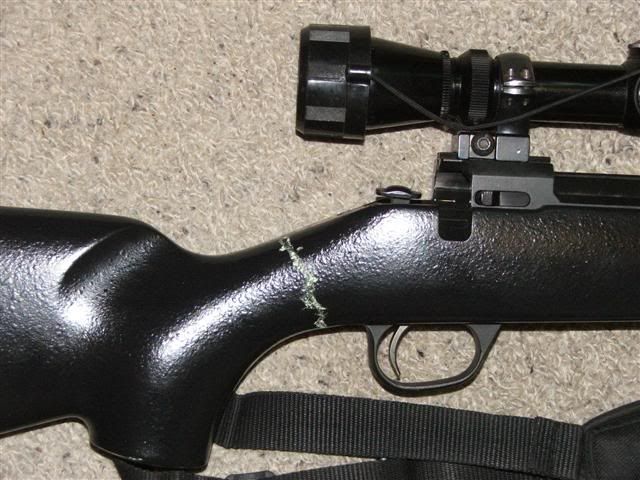My son and I recently purchased a Sako M995 in 6.5x55SE with a view to using it on longer shots on chamois (250-350 yards). We were very pleased when sighting it in to get 0.5 to 0.75 MOA at 100yds with our first reloads. So took it away for a week's flycamping/hunting above the bushline.
Conditions were foggy and damp most of the time but not particularly bad. A couple of light frosts and a bit of snow as we walked out. So we were dismayed to find the synthetic stock had cracked just behind the trigger guard as indicated by the chalk in the picture below. The rifle had not been dropped or abused at all (we were taking extra care on its first outing) and we only fired about four shots in all. I can't think that the cold had anything to do with it - this is after all a Finnish rifle!

So what do you think caused the crack and how should we go about fixing it? I have only had walnut stocks before (on my two Winchester Model 70s) and both these rifles have stood up to a lot of abuse in the mountains without serious harm apart from scratching. Is this a common synthetic problem?
The crack does not extend around the stock but visibly opens if you flex the rifle.
Incidentally my local gunshop thought it might be a McMillan stock but I can't think of any reason why the original Sako stock should have been replaced. Is there any way of distinguishing a McMillan from a Sako stock?
Conditions were foggy and damp most of the time but not particularly bad. A couple of light frosts and a bit of snow as we walked out. So we were dismayed to find the synthetic stock had cracked just behind the trigger guard as indicated by the chalk in the picture below. The rifle had not been dropped or abused at all (we were taking extra care on its first outing) and we only fired about four shots in all. I can't think that the cold had anything to do with it - this is after all a Finnish rifle!

So what do you think caused the crack and how should we go about fixing it? I have only had walnut stocks before (on my two Winchester Model 70s) and both these rifles have stood up to a lot of abuse in the mountains without serious harm apart from scratching. Is this a common synthetic problem?
The crack does not extend around the stock but visibly opens if you flex the rifle.
Incidentally my local gunshop thought it might be a McMillan stock but I can't think of any reason why the original Sako stock should have been replaced. Is there any way of distinguishing a McMillan from a Sako stock?

